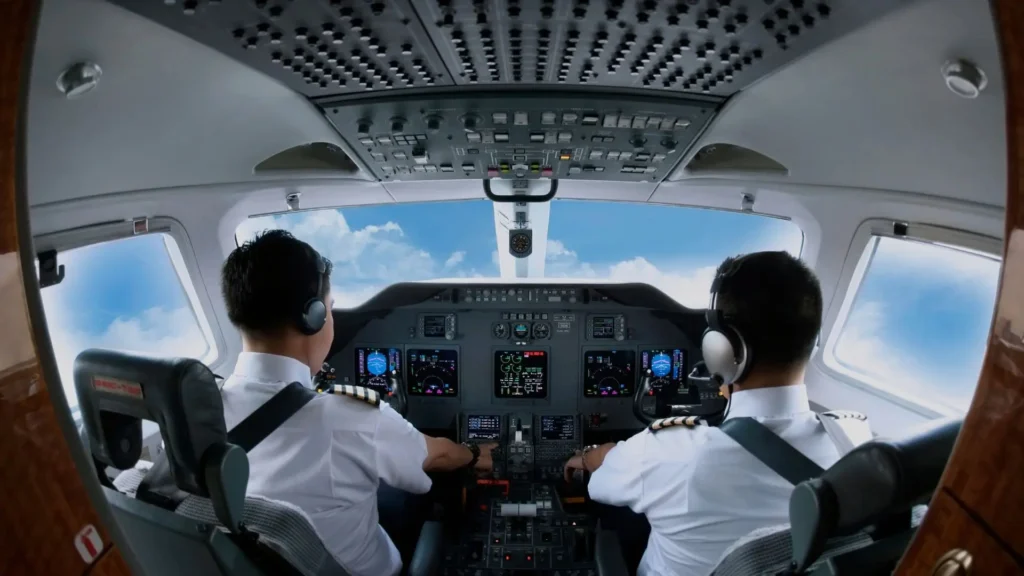As a result, the skill of Smooth Landing becomes a hallmark of competence among pilots, constituting the primary type of knowledge that must be mastered. Whether a pilot has flown for one year or 20 years and whether it is sunny or stormy a pilot that makes those touchdown look genteel will make the passengers trust him or her and prove how well he or she knows the aircraft. Here are five key techniques to get it just right, so that you are well on the way to guaranteeing a good landing, and a anxiety free ending to every flight.
Approach And Alignment
Do not be fooled by the gentle bump at touchdown – a smooth landing actually begins way up in the sky. Pilots meticulously plan their approach, taking into account things like wind blowing across the runway, how long the runway is, and even other planes in the area. This is why SIA has to align perfectly with the runway for a steady approach.
They then very much manage the angle and velocity of the plane to ensure it returns to the correct path although correcting in tiny amounts. Thus, adhering to these strict guidelines, there is no need for any changes in the final moments and all procedures are calm and stable to ensure normal landing.
Flare And Attitude Control
The last component of the touchdown process referred to as touchdown flair that set the difference between a smooth and a rough touchdown. When approaching to the runway, the pilot has to make certain transition from going down to flying several feet above the ground. This is made by maneuvering the airplane to slightly change position by shifting the nose down and lowering the descent rate but not reducing the speed greatly.
The only way to do this is, to land lightly, as if you are alighting on a feather so that the passengers do not get alarmed, or the gear that supports the plane gets overstressed. This movement is done frequently by pilots to ensure that everyone in the airplane has a good comfortable and enjoyable touchdown.
Wind And Crosswind Techniques
Cross wind is also an important aspect as they mean the wind blows across the runway not along the runway. It is called crosswind and it normally affects the stability of the plane through turbulence. Some people take special care and others do not and pilots have special ways to deal with this. One of them is crabbing. The pilot aligns the nose of the airplane along a direction opposite to wind’s direction, however, the airplane itself is paralleled to the runway to be used.
It is like steering a vehicle into the wind by just tilting it slightly. Another technique is known as side-slip. Here the airplane is tilted with the wings parallel to the line of the wind direction. This assists the pilot to maintain control, and make a very smooth landing, right at the center of the runway.
Post-Touchdown Procedures
Landing is not merely the process of coming to earth AIMS (2002) asserts that landing is the coordinated and planned movement towards a conclusion or an objective. That is why there is a set of procedures, which pilots use in order to coordinate the transition from the took-off mode to taxiing. They will next gradually throttle down to come to a stop on the ground after the plane has landed. They will also return the wing flaps to a normal position that they can have control over. Rudder help in moving the plane on the runway like steering the car, and this movement is controlled by this part. Braking is somewhat tricky, more so when the runway is wet.
Drivers require to decrease the speed of the plane but at the same time they have to avoid the process of sliding the tires as it is unsafe and causes wear of brakes. At the same time, they are monitoring the plane’s engines and systems, prepare for intervention if something unforeseen happens. That is why the strict adherence to these steps makes it possible for pilots to ensure all the passengers and other people on board have a comfortable and safe trip by safely landing the plane.
Right Equipment And Airplane Parts
A plane needs two key things for a safe and smooth landing: the right equipment and top-notch care. Pilot John International and other companies provide top-quality parts and services to ensure every landing is as smooth and safe as possible for everyone on board. Such an approach also entails that every single landing is done very professionally as well as the safety of people on board being enhanced. Suppose one day the pilot uses good landing gear and shock absorbers/tires to cushion the impact of the landing.
Equally important are the plane instruments and other navigation systems; there are factors which enable the pilot to have a clear vision, and make the right decisions all through the approach and the eventual landing. Perfomance of the checkups and adherence to maintenance schedules ensures that all the airplane parts ranging from brakes to hydraulics are in good condition. Having a proper equipment and maintaining it well, the pilots are able to land safely with the passengers’ lives on board and also the set time for the plane to land too.
Conclusion
Those delicate, soft pats you get on an airliner? That takes a lot of talent. Professional drivers correlate rock-steady flight with perfection in visibility to deliver you on time irrespective of the weather condition. In other words, preparation before the flight, precise control on the occasion like landing and consistent practice are definitely the key perspectives of ‘the magic of touch’ of a pilot. It also lets them to make safe and comfortable landing, and therefore everyone on board would have enjoyed the whole trip.


